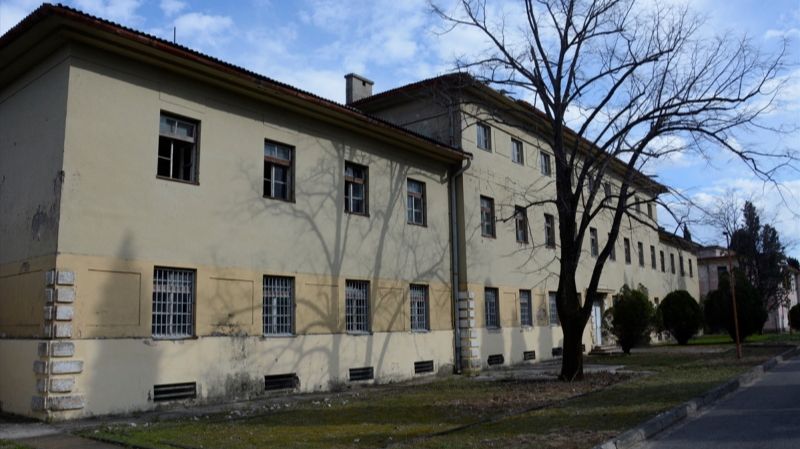The Institute for Research of Crimes Against Humanity and International Law of the University of Sarajevo believes that the construction of the HVO museum on the site of the "Heliodrom" camp in Mostar "would be a mockery of all the victims who survived the crime and are still experiencing various types of torture".
Good future relations
- We consider it important to take all actions and prevent any construction in the place where there was a concentration camp during the period of aggression against Bosnia and Herzegovina, due to the fact that such construction is to the detriment of all victims of aggression in the period 1992-1995. but also of all citizens of Bosnia and Herzegovina, as well as good future relations between the peoples of Bosnia and Herzegovina - it is stated.
In a press release, they point out that the Institute for Research of Crimes Against Humanity and International Law of the University of Sarajevo is reacting to the news that the construction of the HVO museum has already begun on the site of the "Heliodrom" camp in Mostar, which is funded by the state budget of the Republic of Croatia with co-financing by the Ministry of Defense of Bosnia. and Herzegovina.
As they remind, it is planned that the HVO museum will be located in the building where the command of the "Heliodrom" camp was stationed, and the museum display would consist of military and cultural-historical collections.
"An Act of Revisionism"
- It is obvious that the construction of the HVO museum at that location is an act of revisionism and the alteration and falsification of established historical and judicial facts. It is inadmissible and inappropriate that, at the place where the war crime was committed and judged by the International War Crimes Tribunal, the army of the HVO and the HV of the Republic of Croatia, which participated in organizing and committing crimes against the civilian population, a museum is already being built, and that in the place where in the period from the second half of 1992 to the middle of 1994, it was the "Heliodrom" concentration camp. On the other hand, we believe that it is a provocation towards all the victims, who went through wartime torture camps in Bosnia and Herzegovina in the period from 1992-1995. - it is emphasized.
According to the Institute, on May 9, 1993, as part of the HVO attack on Mostar, members of the HVO carried out a mass arrest of the civilian population from the part of the city on the right bank of the Neretva River in Mostar, where, in addition to the resident population, the largest number of refugees were housed. partly from the area of Podveleža and Nevesinje. The civilians were taken to the "Heliodrom" camp.
6,000 Bosniaks were arrested and detained
According to the data of the Commission for Social Protection and Humanitarian Aid, only until June 30, 1993, 6,000 Bosniaks were arrested and detained. Among them were several hundred Serbs and members of the VRS, as well as "disloyal Croats". Inmates from other HVO camps were also brought to the same camp. Considering that the number of inmates was increasing every day, it is difficult to determine the final number - he emphasized.
As they emphasize, crimes against inmates were committed in HVO camps. They were used for forced labor, demining minefields, as human shields during attacks by HVO members on ARBIH combat positions, extracting injured or dead members during their offensives, building houses and cleaning the houses of Croats, for digging trenches and trenches, digging graves and many other forced labor.
- They were taken mainly to Buna, Bakina Luka, Raštane, Soviče, Risovac and other places in western Herzegovina. The most difficult places to work were the "Vinko Martinović Štela sector", from the Health Center to HIT, the "Benito Sesar sector" from Šemovac to the Health Center, and work in Šantićeva Street. Going to the area of Bijelo Polje was especially critical for the life of the prisoners, where every time one of the prisoners was killed during the works. It also happened that camp inmates escaped, after which other camp inmates would be mistreated - he points out.
A crime against humanity
According to the Reports of the Military Police Administration, inmates were still in the Heliodrom after the signing of the Washington Agreement, and according to the Report of April 17, 1994, a number of 228 inmates were recorded.
- The top of Herceg Bosnia (Jadranko Prlić, Bruno Stojić, Slobodan Praljak, Milivoj Petković, Valentin Ćorić, Berislav Pušić, Mladen Naletilić Tuta, Vinko Martinović Štela), who knew about the camps and torture in those camps, were convicted before the international court in The Hague. they did nothing to prevent it, but encouraged actions that led to crimes against humanity. Before the domestic courts, several members of the HVO were sentenced to several years in prison for crimes against humanity in the "Heliodrom" camp - the Institute announced.
Source: Avaz.ba

(1).png)
(1).png)